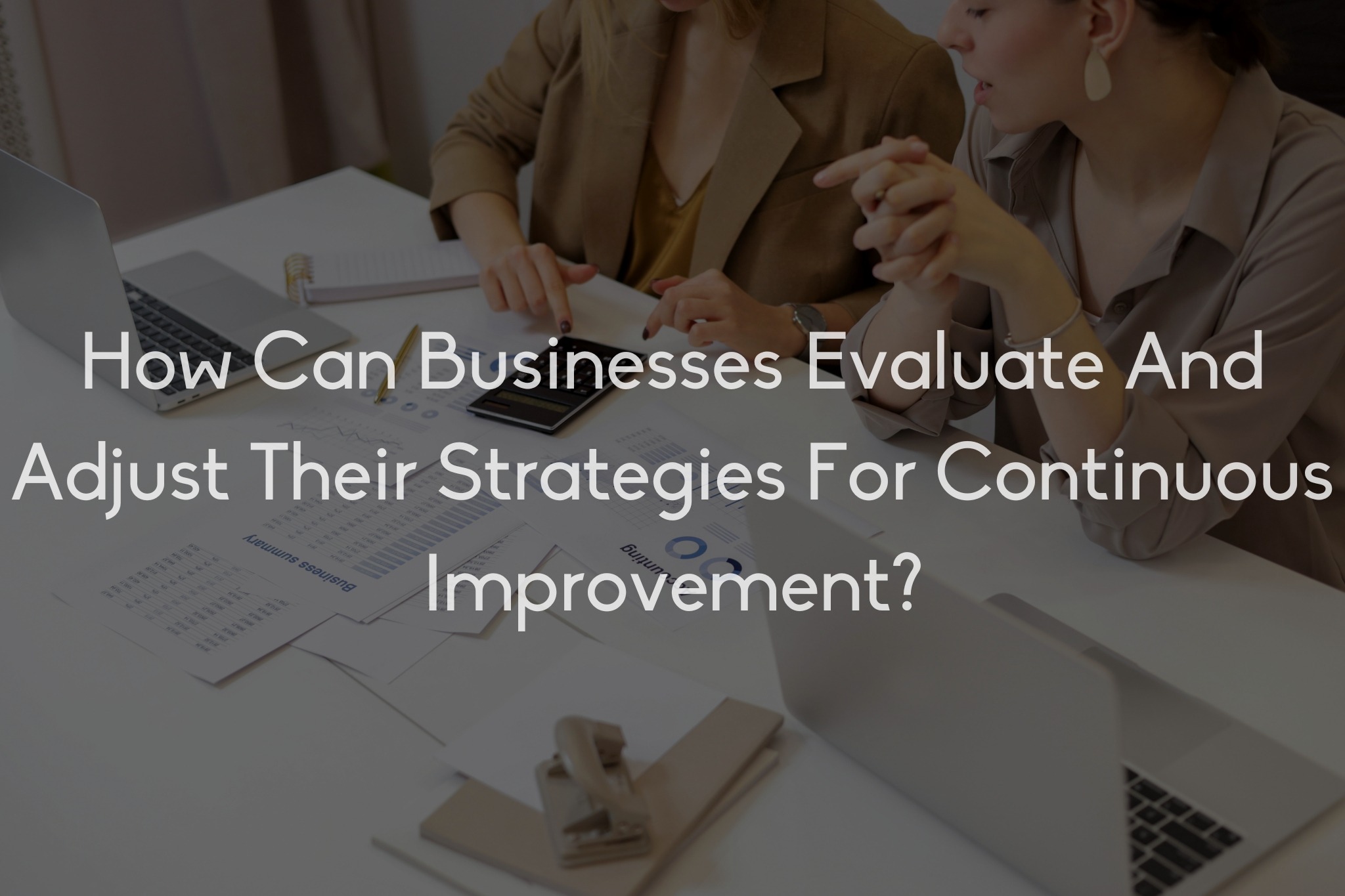
 In today’s fast-paced world, businesses face constant pressure to stay relevant, efficient, and innovative. Continuous improvement is no longer just a buzzword; it’s an essential mindset for any company aiming to thrive in a competitive marketplace. But the real question is: how can businesses effectively evaluate their strategies and adjust them for sustained growth?
In today’s fast-paced world, businesses face constant pressure to stay relevant, efficient, and innovative. Continuous improvement is no longer just a buzzword; it’s an essential mindset for any company aiming to thrive in a competitive marketplace. But the real question is: how can businesses effectively evaluate their strategies and adjust them for sustained growth?
This article dives deep into the core of this challenge, offering practical advice on how to stay on top of your game. Whether you’re a startup trying to scale or an established business looking to innovate, the right strategy evaluation and adjustment process is key. Keep reading to uncover how your business can continuously evolve and stay ahead.
At the heart of continuous improvement lies the ability to assess your current strategy, pinpoint areas that need attention, and implement changes that drive results. Without this structured approach, businesses risk stagnation. You’ll want to ensure your strategy not only meets short-term goals but aligns with long-term vision and market dynamics. This requires a disciplined yet flexible method of evaluation and adjustment that empowers you to move forward effectively.
We’ll break this down into clear steps that any business can adopt. From understanding where you currently stand, to implementing changes, and monitoring progress, these strategies will help you foster a culture of improvement. This is your roadmap to keeping your company agile, responsive, and ready for what’s next.
Before you can adjust your strategy, you need a clear understanding of where you stand. This requires taking an honest look at your business’s current performance. Begin by reviewing key performance indicators (KPIs) to get a snapshot of how well your strategies are working. Are you meeting your revenue targets? Are customer satisfaction scores where you want them to be?
Take time to review both financial metrics and qualitative feedback. Are your employees aligned with the company’s goals? Do they feel empowered to contribute their ideas?
This assessment also requires an audit of your competitors and market conditions. What’s working for them? Where are the gaps in your industry? Your strategy should always be fluid and responsive to external changes. Analyzing this baseline will give you the clarity you need to move forward and decide which areas need the most attention.
Once you have a clear picture of where your strategy stands, it’s time to define where you want to go. Clear, measurable goals are the backbone of any continuous improvement plan. This isn’t about vague ambitions like “increase profits” or “boost efficiency.” Instead, think specific and measurable targets, like “increase customer retention by 15% over the next quarter” or “reduce production time by 10% in six months.”
The SMART framework (Specific, Measurable, Achievable, Relevant, Time-bound) can guide your goal-setting process. These goals should challenge your team but also be realistic, ensuring you can measure progress in real-time. Establishing these metrics upfront helps in assessing whether adjustments are having the desired impact.
Data is at the core of every decision you make. The more data you have, the clearer your path becomes. Gathering feedback from all angles—customers, employees, stakeholders—ensures that you have a 360-degree view of your operations.
Customer feedback is invaluable; whether through surveys, reviews, or direct communication, understanding customer needs and pain points can highlight areas where your strategy may fall short. Internal feedback from employees is equally crucial. Your team’s perspective on operational hurdles or customer interaction challenges can pinpoint bottlenecks in your processes.
Don’t forget to analyze market trends and competitor activities. Stay current on industry shifts, technological advancements, and consumer preferences. Data-driven decisions provide the foundation for targeted, effective changes to your strategy.
Once you’ve collected your data, it’s time to analyze it. What are the gaps in your current strategy? Are there areas where customer needs are not being met or where operational efficiency could be improved? Is your product or service outdated or lacking in certain features that could provide a competitive edge?
Take a deep dive into your SWOT (Strengths, Weaknesses, Opportunities, and Threats) analysis to gain clarity. This exercise can reveal whether you’re over-investing in areas that aren’t moving the needle or missing opportunities that could make a significant impact. Align your strategy with the market’s pulse and identify areas for improvement that align with your goals.
Now comes the exciting part: making changes! But here’s the thing—continuous improvement doesn’t require massive overhauls. In fact, incremental changes can often yield the best results. Start with small adjustments and test them over time to see how they affect your KPIs.
For example, if customer feedback indicates dissatisfaction with your website navigation, implement a redesign or tweak specific features, then measure whether the change leads to improved user engagement or sales. This iterative process allows you to refine strategies over time, minimizing risks and ensuring that adjustments truly drive the desired outcomes.
Use A/B testing where appropriate—experiment with different strategies in parallel to determine which works best. Remember, the key is to make data-driven decisions and refine your strategies based on real-world results, not assumptions.
Continuous improvement isn’t just about the numbers; it’s about fostering a culture where everyone is committed to making things better. Employees should feel empowered to suggest improvements, innovate, and contribute to strategic discussions. This mindset should permeate every level of your organization.
Encourage feedback loops, regular team check-ins, and open channels for discussing potential improvements. Whether it’s through brainstorming sessions, town halls, or regular reviews, make continuous improvement a core value that everyone actively participates in. This not only leads to better strategies but also boosts morale and employee engagement.
Finally, the cycle of improvement never ends. Even after implementing changes, the process of monitoring and adjusting should continue. Constantly track the KPIs you set earlier, and ensure that your adjustments are creating measurable improvements. If something isn’t working, don’t hesitate to make further tweaks or even pivot entirely.
Strategic reviews should be scheduled regularly—whether quarterly, bi-annually, or annually—to ensure you’re not deviating from your path. Use these reviews to reflect on what’s working, what’s not, and what you can adjust to stay ahead of the competition. This ongoing feedback loop will ensure that your business continues to evolve in line with customer needs and market conditions.
Continuous improvement requires an unwavering commitment to regular evaluation and adjustment. By assessing your current strategy, setting clear goals, gathering data, identifying gaps, testing small changes, building a culture of improvement, and monitoring progress, your business will be poised for long-term success.
Every business is a work in progress. The market is always shifting, and so are customer expectations. Adopting a flexible, iterative approach to strategy will help you stay ahead of the curve and keep your business on the path to sustainable growth. So take the first step today—evaluate, adjust, and improve. Your future self will thank you.

